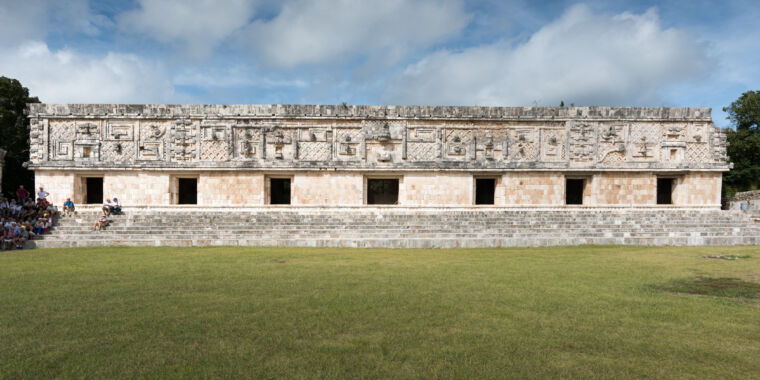Archaeological Discovery of Burned Mayan Royalty
As societies progress, the governing structures that lead them must adapt to the changing times. Transitioning from one era to the next is often tumultuous, as evidenced by the fiery declaration made by certain Mayan rulers in ancient times.
Unearthing the Secrets of Ucanal
Archaeologists conducting excavations at the Mayan archaeological site of Ucanal in Guatemala made a startling discovery. Buried beneath the ground were the charred remnants of royal bodies and artifacts, serving as a poignant reminder of a fallen regime. Interestingly, there were no signs of fire damage on the surrounding structure, suggesting that the remains were burned in one location and then buried elsewhere. This deliberate act raises questions about the motives behind such actions.
Led by Christina T. Halperin from the University of Montreal, the team of archaeologists believes that the new ruler at the time sought to erase all traces of the previous dynasty. Burning the remains was not enough; they had to be buried in a location where they would fade into obscurity, overshadowed by the dawn of a new era.
A Shift in Power
While the ritualistic burning of bodies and objects from preceding reigns was not uncommon among the Mayans, the discovery of burnt royal remains in a secondary tomb at Ucanal was unprecedented. The radiocarbon dating of these remains coincided with the rise of a new ruler named Papmalil, who assumed the title of “ochk’in kaloomte’,” or western overlord. His possible foreign origins marked a significant departure from the established ruling lineage, signifying a pivotal moment in Mayan history.
Papmalil’s ascension heralded the decline of the K’anwitznal dynasty, to which the bones and ornaments likely belonged. His rule was characterized by a period of pronounced prosperity, with inscriptions bearing his name found at the site where the burnt fragments were discovered.
The Dawn of a New Era
“Papmalil’s rule was not only seminal due to his potential foreign lineage but also because it reshaped the political landscape of the southern Maya Lowlands,” highlighted the archaeologists in their recent study published in the journal Antiquity.
The overthrow of the K’anwitznal dynasty was commemorated at the temple of Caracol through engravings depicting the captive ruler in bondage. Just decades later, Papmalil’s dominance was immortalized in stone, portraying him as a powerful figure forging alliances with other kings. This visual narrative underscored the newfound strength of Papmalil’s regime in foreign relations.
Consequences of Power
Papmalil’s reign marked a turning point for the city of Ucanal, propelling it towards prosperity and international prominence. The deliberate destruction of old relics and royal remains symbolized the dismantling of the former regime and the consolidation of Papmalil’s rule. The manner in which the burnt bones and artifacts were treated suggested a ceremonial act aimed at severing ties with the past and affirming the legitimacy of the new order.
The painstaking analysis of the remains revealed the intense heat to which they had been subjected, with temperatures reaching up to 800°C (1,472°F). The fractures on the jade and greenstone ornaments pointed to a high-intensity burning process, indicative of a deliberate act to obliterate the remnants of the past rulers.
Legacy of Desecration
Despite the ceremonial nature of the fire-burning event, the archaeologists viewed it as an act of desecration. The disposal of burnt remains alongside construction debris at the base of a temple highlighted the disdain with which the old regime was treated. Such overt displays of power underscored Papmalil’s resolve to establish his authority and erase the legacy of his predecessors.
While past cremations reflected a level of reverence for deposed rulers, Papmalil’s actions represented a stark departure from tradition. The deliberate destruction of royal remains showcased the lengths to which some leaders go to assert their dominance and reshape history in their image.
Conclusion
The burning of the royal bones and artifacts at the Ucanal site served as a poignant reminder of the tumultuous transition of power within ancient Mayan society. Papmalil’s rise to prominence marked a significant shift in political dynamics, setting the stage for a new era of prosperity and influence. Through the deliberate destruction of the old regime, Papmalil sought to establish his authority and usher in a period of unparalleled growth and development.
Image/Photo credit: source url





